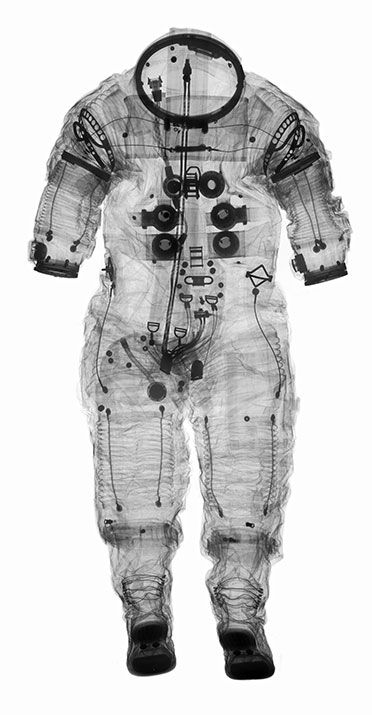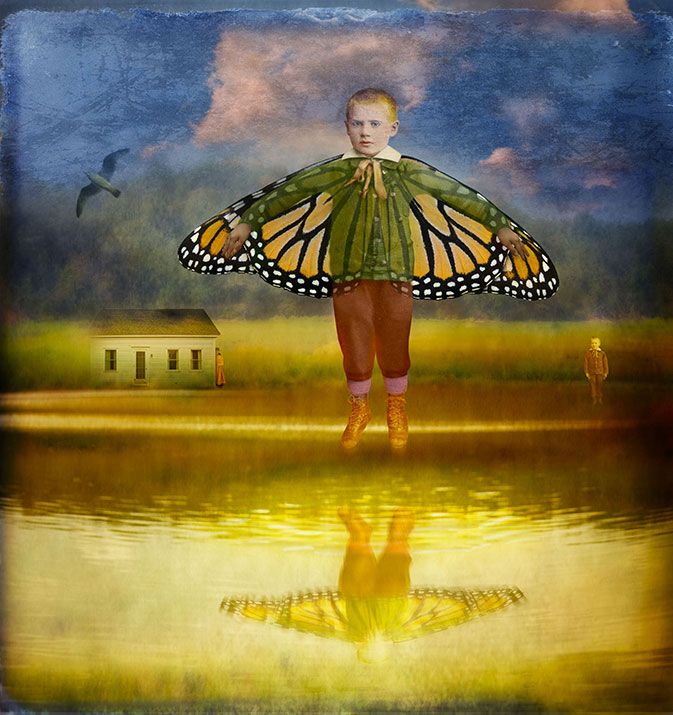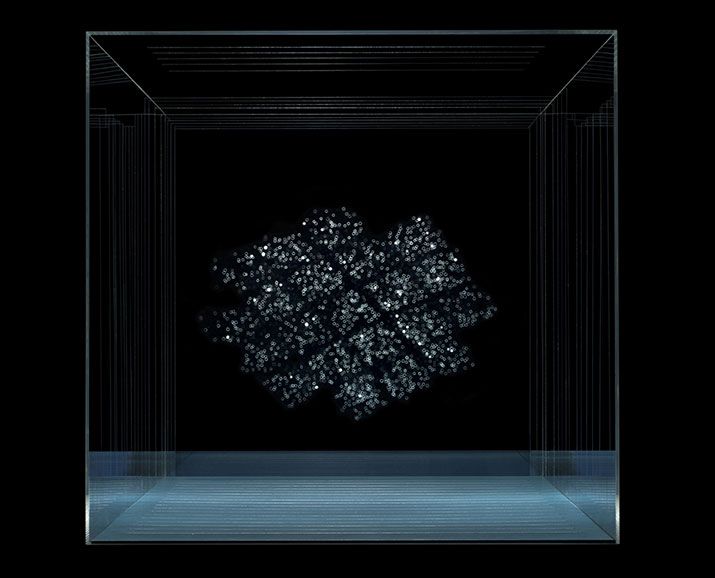The Beauty of Space, Times 3
Aerospace in mixed media
/https://tf-cmsv2-smithsonianmag-media.s3.amazonaws.com/filer/In-the-museum-beauty-space-631.jpg)
What do spacesuits, aerospace-themed art, and the search for planets capable of supporting life have in common? From July 26 to the end of the year, three mini-exhibits exploring those topics will share the National Air and Space Museum’s Flight and the Arts gallery.
Suited for Space
Visitors will enter the gallery through Suited for Space, a traveling exhibition tracing the evolution of what are essentially one-person spaceships, from the earliest suits worn by Project Mercury and Gemini astronauts, through those that protected Apollo astronauts on the moon, to the latest suits worn by crew members of the International Space Station as they venture outside their orbiting home. In addition to Apollo-era items that never flew—suit, helmet, gloves, and boots—the display includes stunning photographs and X-ray images that reveal how these complex garments are constructed. Seeing the images, visitors will understand how the suits provide mobility while protecting their occupants and enabling them to live and work in space. Sponsored by DuPont, Suited for Space is on a tour that will take it to 10 other museums and science centers throughout the country.
“High Art”: A Decade of Collecting
The Museum maintains one of the world’s most comprehensive collections of aerospace-related art, including some 7,000 paintings, drawings, prints, posters, and sculptures. The collection is a historic and artistic record of flight, from the first balloons to the latest space achievements. Helping to bring the static air- and spacecraft on display to vibrant life, the artwork offers artistic visions as a way to inspire us and stretch our imaginations.
This art exhibit-within-an-exhibit affords us the opportunity to show 50 of the works acquired in the last decade. The first gallery, Visions of Flight, features the work of contemporary artists with boundless imaginations. Pilots Lise Lemeland and Jeffrey Milstein and astronaut Alan Bean share their personal experiences through art, while Fran Forman and Berndnaut Smilde use surreal photographs to create imagined worlds. Angela Manno, Michael Knigin, and Max Finkelstein inspire a sense of wonder at our venture into space, and ask us to consider what it means to take our first steps away from Earth.
Faces of Flight, the second gallery, features portraits of 11 aerospace figures, each offering something more than a simple good likeness. Tom Leamon portrays French ace Georges Guynemer as his admiring countrymen saw him: a heroic warrior and martyr. The portrait sketches of newspaper artist Samuel Johnson Wolfe show us the personalities of the aerial heroes of the Depression years, from a no-nonsense Frank Hawks to a grinning Douglas “Wrong Way” Corrigan. Mimi Stuart’s painting captures Eugene Cernan’s own memory of his walk on the moon.
The Fledglings, a large painting of the 1908 Morris Park air meet by artist Rudolph Dirks, creator of the pioneering newspaper comic strip “The Katzenjammer Kids,” opens the final gallery, Looking Back, a group of works documenting aspects of the history of flight. Other paintings on view in this section include a dramatic example of 1930s advertising art by Clayton Knight, colorful posters, and works by other modern masters of aerospace art.
Searching for Goldilocks
Are there other worlds than ours? Worlds that could support life? Part of the mission of the Kepler space observatory is to survey a portion of the Milky Way galaxy with the hopes of detecting Earth-size planets that might fit the criteria for hosting life. Angela Palmer captures the spirit and excitement of that quest in a unique sculpture, Searching for Goldilocks. With the generous support of the Smithsonian United Kingdom Charitable Trust, this single work is the third and final element of the installation in Flight and the Arts. Representing the area of space surveyed by Kepler, the work is composed of 18 sheets of glass, each standing for a slice of space 250 light-years deep, with etched solid circles signifying planets that could be suitable for life.
Touching on the past, present, and future of flight, the three exhibitions that will share the Flight and the Arts gallery this summer offer visitors a unique opportunity to appreciate the technology that enables men and women to survive in space, and then to step away from the impressive hardware that fills the rest of the Museum and enter the space of the imagination, created by a group of visionary artists.


